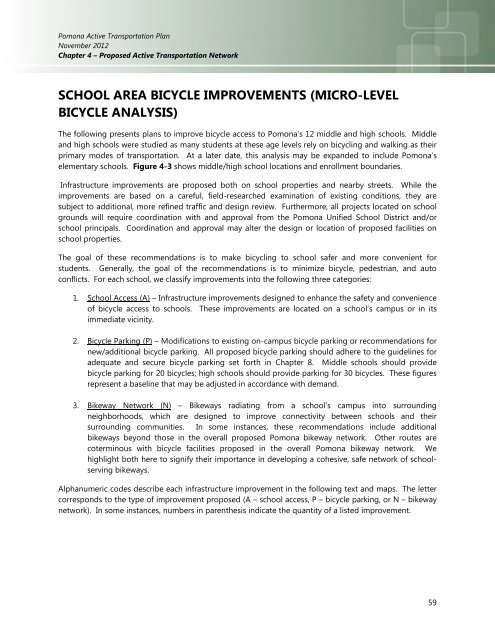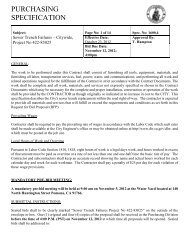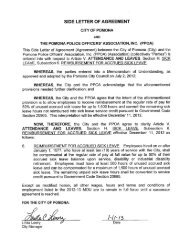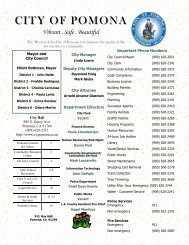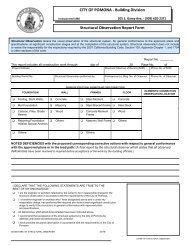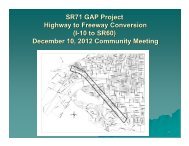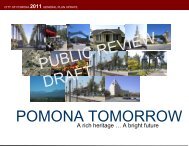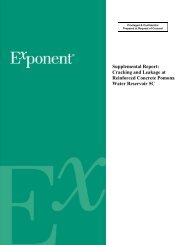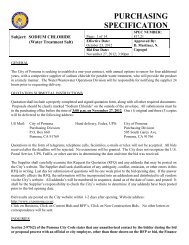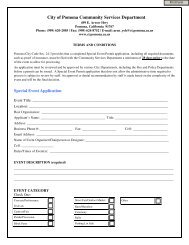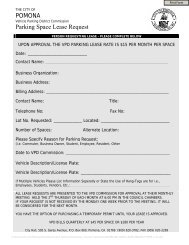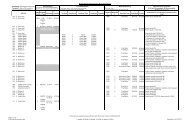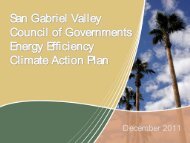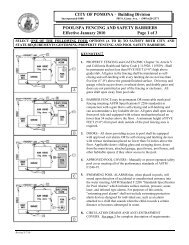Active Transportation Plan - City of Pomona
Active Transportation Plan - City of Pomona
Active Transportation Plan - City of Pomona
You also want an ePaper? Increase the reach of your titles
YUMPU automatically turns print PDFs into web optimized ePapers that Google loves.
<strong>Pomona</strong> <strong>Active</strong> <strong>Transportation</strong> <strong>Plan</strong><br />
November 2012<br />
Chapter 4 – Proposed <strong>Active</strong> <strong>Transportation</strong> Network<br />
SCHOOL AREA BICYCLE IMPROVEMENTS (MICRO-LEVEL<br />
BICYCLE ANALYSIS)<br />
The following presents plans to improve bicycle access to <strong>Pomona</strong>’s 12 middle and high schools. Middle<br />
and high schools were studied as many students at these age levels rely on bicycling and walking as their<br />
primary modes <strong>of</strong> transportation. At a later date, this analysis may be expanded to include <strong>Pomona</strong>’s<br />
elementary schools. Figure 4-3 shows middle/high school locations and enrollment boundaries.<br />
Infrastructure improvements are proposed both on school properties and nearby streets. While the<br />
improvements are based on a careful, field-researched examination <strong>of</strong> existing conditions, they are<br />
subject to additional, more refined traffic and design review. Furthermore, all projects located on school<br />
grounds will require coordination with and approval from the <strong>Pomona</strong> Unified School District and/or<br />
school principals. Coordination and approval may alter the design or location <strong>of</strong> proposed facilities on<br />
school properties.<br />
The goal <strong>of</strong> these recommendations is to make bicycling to school safer and more convenient for<br />
students. Generally, the goal <strong>of</strong> the recommendations is to minimize bicycle, pedestrian, and auto<br />
conflicts. For each school, we classify improvements into the following three categories:<br />
1. School Access (A) – Infrastructure improvements designed to enhance the safety and convenience<br />
<strong>of</strong> bicycle access to schools. These improvements are located on a school’s campus or in its<br />
immediate vicinity.<br />
2. Bicycle Parking (P) – Modifications to existing on-campus bicycle parking or recommendations for<br />
new/additional bicycle parking. All proposed bicycle parking should adhere to the guidelines for<br />
adequate and secure bicycle parking set forth in Chapter 8. Middle schools should provide<br />
bicycle parking for 20 bicycles; high schools should provide parking for 30 bicycles. These figures<br />
represent a baseline that may be adjusted in accordance with demand.<br />
3. Bikeway Network (N) – Bikeways radiating from a school’s campus into surrounding<br />
neighborhoods, which are designed to improve connectivity between schools and their<br />
surrounding communities. In some instances, these recommendations include additional<br />
bikeways beyond those in the overall proposed <strong>Pomona</strong> bikeway network. Other routes are<br />
coterminous with bicycle facilities proposed in the overall <strong>Pomona</strong> bikeway network. We<br />
highlight both here to signify their importance in developing a cohesive, safe network <strong>of</strong> schoolserving<br />
bikeways.<br />
Alphanumeric codes describe each infrastructure improvement in the following text and maps. The letter<br />
corresponds to the type <strong>of</strong> improvement proposed (A – school access, P – bicycle parking, or N – bikeway<br />
network). In some instances, numbers in parenthesis indicate the quantity <strong>of</strong> a listed improvement.<br />
59


